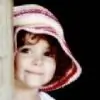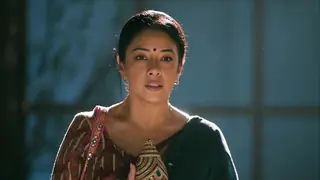here's another article on the origin of gharanas.
Gharana an exclusive tradition, or school, of music centring on a maestro. The Urdu word gharana means a family. Fellow practitioners and learners of a particular genre of music constitute a gharana. In this sense, the disciples of a particular guru are also identified as a gharana.
When a talented maestro begins to present songs or instrumental music in his own style and starts teaching his disciples, his own style becomes in due course a gharana. It is believed that well-organised gharanas began to develop early in the 14th century, although there already existed two principal gharanas- kalavanta and kawal-and some rules and disciplines of music. Each gharana is identified by an individualistic style of singing or playing of instruments. A gharana is named after its founding guru or after the place of its growth: for example the Amir Khasru gharana and the Bishnupur gharana. Each gharana trains up its disciples according to its own curriculum, and it takes generations to develop a reputed gharana. The devoted practitioners of a gharana thus enrich it, adding new resources to the gharana's culture of music.
There are three types of gharanas: of vocalists, instrumentalists and dancers. A special skill in the application of ragas leads to the founding of a gharana of vocalists. A gharana of instrumentalists is based on the special skill of a master player. A dance gharana is based on the special skill of a master dancer. The sole gharana of Bengal was that of Bishnupur, established by Ramshankar Bhattacharya during the reign of Raja Raghunath Singh II. Bishnupur was then the only centre of music in Bengal.
The Bishnupur gharana meant essentially a dhrupad gharana, for Bishnupur was essentially a centre for dhrupad culture. The founding and expansion of this gharana was an event of great significance in the development of music in Bengal as it helped in expanding the culture of dhrupad in Bengal. The dhrupad of the Bishnupur gharana uses shuddha dhaivata in raga vasanta, a touch of komal nisada in the descending notes of bhairava. It has abandoned kadi madhyam in ramakeli, and uses suddha dhaivata in puravi and komal nisad in vehaga. It has also developed its own character with regard to rhythm.
Several other gharanas have been active in Bengal although they are not indigenous. The Emdad Khan gharana, which is basically a sitar and surbahar gharana, developed in central India towards the end of the 19th century. It was nurtured and expanded in Bengal by his son enayet khan, who was the court singer of brajendra kishore roychowdhury, the zamindar of Gouripur in mymensingh.
The sarod gharana of Niamutullah Khan arose in northern India towards the end of the 19th century. Niamutullah Khan developed the sarod by modifying the rabab. In playing this stringed instrument he created an elegant style of his own. Following his death, his two sons, Karamatullah and Asadullah Khan Koukav (Koukav Khan), carried forward their father's gharana and introduced it into Bengal. Koukav Khan became a resident of Kolkata towards the beginning of the 20th century and until his death devoted himself to the work of this gharana. Prominent among his disciples were Dhirendranath Basu and Sakhawat Husain. After Koukav Khan's death, his brother Karamatullah took charge of the gharana. He kept it alive by creating a huge number of disciples.
The Gaya gharana included both vocalists and instrumental musicians, as it nurtured both the singing of kheyal and the playing of esraj introduced by Hari Singh and his son Hanuman Das around the middle of the 19th century. Towards the end of the century, their disciple, Kanailal Dhenri, introduced the gharana to Kolkata and the rest of Bengal. Kanailal himself played the esraj and taught Amritalal Dutta of Kolkata and Abanindranath and Arunendranath of the Tagore family how to play it. thungri and harmonium playing were added to the Gaya gharana through the personal efforts of Hanuman Das' son, Mohan Das. The superb composition of the kheyal, the clarity of its words and its enchanting melody as well as the playing of the esraj with a touch of kheyal and the addition of a sharp note were the gharana's specialty.
The Gwalior gharana, also known as Gholam Ali's gharana, was a sarod gharana. It originated in north India towards the end of the 19th century. Gholam Ali created this gharana by modifying the rabab. Its principal characteristic was dexterity in playing different notes. Gholam Ali's three sons mastered the art of playing the sarod. Of them, Abdullah Khan brought the gharana to Bengal. He gave sarod lessons to Brojendra Kishore, zamindar of Gouripur in Mymensingh, and his son Birendra Kishore. Abdullah Khan's son, Amir Khan, helped expand the gharana to Rajshahi, Gouripur in Mymensingh and Kolkata. It was basically his efforts that expanded the Gholam Ali gharana in Bengal.
The Dagor gharana is an ancient dhrupad gharana. The name emanates from its dhrupad presentation based on Dagor compositions. There is no authentic account of its origin. Reliable information is available only from the 18th century, from the time of Bahram Khan and his father. In fact, the gharana that is known today began with Bahram Khan. It was located first at Jaipur and then at Udaipur. One of its best-known artistes was Nasiruddin. His two sons, Nasir Moinuddin Dagor and Nasir Aminuddin Dagor, became famous as the Dagor brothers. Their performances outside India drew considerable appreciation from music lovers. The gharana, introduced into Bengal by Nasiruddin, was carried forward after his death by Aminuddin. The dhrupad performed by this gharana is deeply devotional and highly stylised. It is said that 52 ornamentations are used in it. The gharana specialises in presenting the dhrupad using the vina for musical performances and the duet form for vocal ones.
The Prasaddu-Manohar gharana, named after the brothers Hariprasad Mishra and Manohar Mishra, appeared towards the beginning of the 19th century at Benares. It inclines towards beats and tempo and accommodates a variety of vocal styles and instrumental music. Although originating in Benares, it flourished in Kolkata during the lifetime of the two brothers. Their successors carried forward the tradition of their gharana in Bengal. Maheshchandra Mukherjee and Nagendranath Bhattacharya were among the famous disciples of this gharana.
Vilayet Ali or Haji Vilayet Ali founded the Farrukhabad tabla gharana in Uttar Pradesh around the middle of the 19th century. It entered Bengal through the famed tabla player, Ahmed Jan, and flourished through Chunilal Gangopadhyay and Gyanprakash Ghosh and their disciples. Skillful and bold playing of notes as well as the inclusion of some dance notes are the specialty of this gharana.
Ramsahay started the Benares tabla gharana towards the close of the 19th century. Through his disciples it gained a distinction of its own. In this gharana, the tabla was played together with the pakhwaj, dhol and kettle drum. Another specialty of this gharana was the playing of the tabla in tune with kathak dance beats and accompanying the recitation of hymns and verses from the scriptures. It became known in Bengal through the well-known tabla player Moulviram. He lived for a long time in Bengal and created a large circle of disciples, expanding the gharana. Among his reputed disciples were Amritalal Mishra, Harendra Kishore Roy Choudhury and Ashutosh Bhattacharya.
The Benares Misra Gharana arose in Benares towards the end of the 19th century round Buddhu Misra. The sarangi was used to accompany the performance of tappa and kheyal. Later the tabla was added to the performance. It gained a place in Bengal through Bechu Mishra, son of Buddhu Mishra. Among the famous disciples of this gharana are Ramprasad, Sharat Chattopadhyay and Ramnarayan Choudhury.
The Betia gharana developed towards the beginning of the 19th century around the court of Betia, in Bihar, through the initiative of the dhrupad artiste, Raja Ananda Kishore. It came to Bengal through two brothers, Guruprasad Mishra and Shibnarayan Mishra. At one stage, Bengal became its principal centre. Among its prominent artistes were Lalchand Baral and Satishchandra Dutta. Skill in the intricate playing of notes and a wide range of vocal performances were its forte.
The Rampur gharana was established around the middle of the 19th century under the patronage of the court of Rampur. It is considered a reincarnation of the Tansen gharana as the talented descendants of Tansen had a hand in founding it. The gharana came to Bengal through Ustad Dabir Khan. The famous sarod player, Fida Hossain, and the sitar maestro, Ravi Shankar, belong to this gharana. A principal feature of this gharana was a completeness of approach and a balancing of the dhrupad attitude with a harmony of sweet sound.
The Lucknow tabla gharana developed at the court of the nawabs towards the end of the 18th century or the beginning of the 19th with a tabla player named Bakhsu. After Nawab Wazid Ali was banished to Matia Burj, close to Kolkata, Bakhsu's grandson Chhote Mia, and his son, Babu Khan, joined the court. It was through them that the gharana became popular in Bengal. Its famous artistes included Nagendranath Basu, Monilal Mitra, Enayetullah and Abid Husain. Its hallmark was the combination of kathak dance beats and thumri tunes with the tabla.
Enayet Ali Khan developed the Shahjahanpur sarod gharana. It is considered part of the Seni gharana as Enayet Ali took music lessons from Nirmal Shah, a descendant of Tansen's daughter. Enayet Ali created his gharana on the basis of the sarod that his father, Neamatullah, developed by modifying the Kabuli rabab. In his old age he joined the court of the raja of Bhawal in Dhaka district and continued to cultivate music here till his death. Later generations of his disciples helped to expand the gharana in Bengal. Its principal specialty was playing the sarod in the dhrupad style.
These gharanas have lately suffered a decline due mainly to the abolition of the zamindari system and the modern communication system. Music, like other branches of knowledge, is no longer regionalised. The music of one region now travels almost instantly to others. Inclusion of music in the curriculum of different educational institutions has also reduced the exclusiveness of the gharanas. Now the emphasis is on the universality of music, not on its narrow confines. [Mobarak Hossain Khan]


























